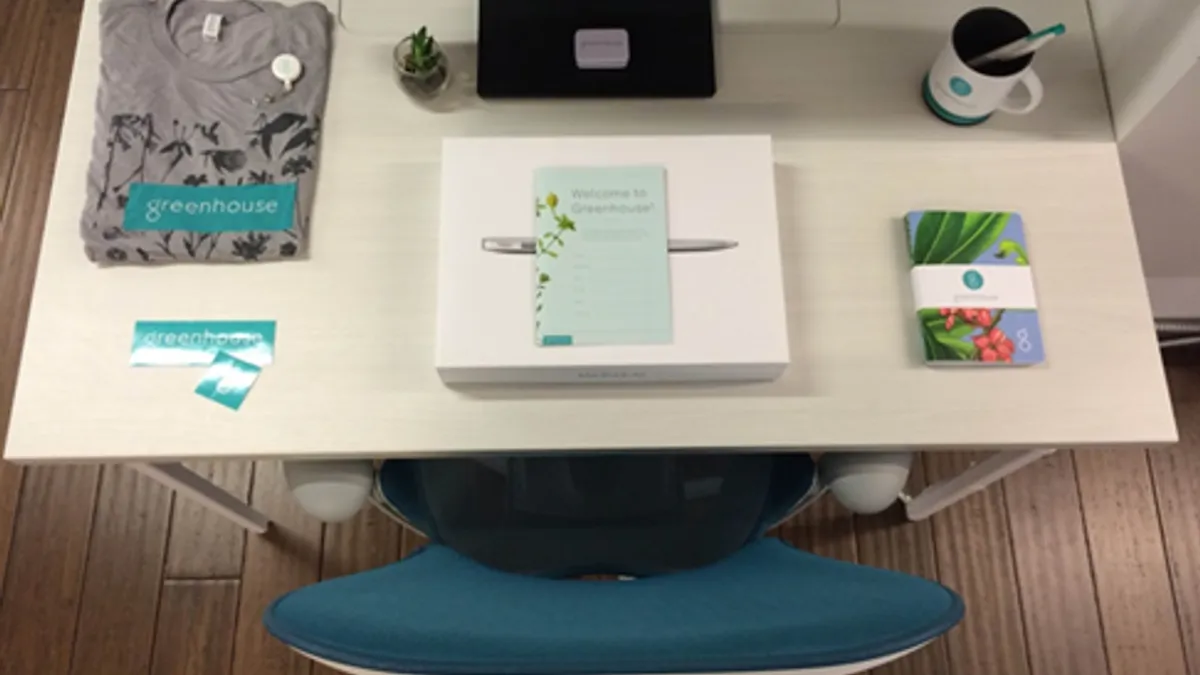In HR circles, the term “onboarding” has become ubiquitous. But what successful onboarding actually means may still be open to debate.
For Dane Hurtubise, vice president of New Initiatives at recruiting software provider Greenhouse (and one of the company’s resident onboarding experts), onboarding is the most critical time in a new employee’s experience. At the same time, it’s a huge chance for an employer to build a real bond with new workers via a positive first impression.
Hurtubise’s view is onboarding should be akin to an “unboxing” experience.
“The moment a new employee arrives at their workspace, ready to get started, is analogous to the moment when a consumer gets ready to open a new purchase at home,” Hurtubise says. “As such, it’s an opportunity for an employer to create excitement about their company and the new employee’s role, and at the same time, for them to confirm their decision to work for you.”
Greenhouse, headquartered in New York City, designs tools that help companies source, interview, hire and onboard the right talent. It currently works with over 1,500 companies, including Airbnb, Slack, Oscar Health and more.
Hurtubise says there are three basic, but critical, steps in building an effective onboarding process:
- At the very least, he says, a new hire should arrive to a designated workspace that’s clean and equipped with the tools that they’ll need to do their job. But to create a memorable experience, employers should consider a more dramatic “physical reveal.” They must ask themselves: “What do you want the new hire to feel the first time they see their new workspace?”
- Second, employers must think hard about how they can customize the experience to reflect their office culture. Consider which equipment, branded swag and other goodies will make a new hire feel welcome at the company and with their new team.
- Finally, keep in mind that you don’t have to wait until the first day to begin information sharing. A lot of companies will overwhelm a new hire on day one with all the info they need all at once. Employers should establish a pre-boarding process and begin sharing details about the office and location, the new hire’s manager, their team and company policies before they even arrive. This will help eliminate first-day jitters and allow them to spend their first day on more substantial activities.
Unfortunately, Hurtubise says many companies fail to distinguish onboarding from orientation. They give new employees the equivalent of an instruction manual on their first day – a thick packet of company policies, HR manuals and other assorted paperwork. They are wrapped up in the checklist items and the compliance aspects of getting a new employee set up.
“Those are important, but onboarding is about much more than that,” he says.
For Hurtubise and Greenhouse, true onboarding should help an employee understand their role and place in the organization, become accustomed to the company culture, and embody company values.
“These things are hard to do, but getting people to fill out paperwork is easy, which is why most companies focus on orientation and neglect onboarding,” he says.
Worst of all, information overload and an overt focus on compliance can be overwhelming (and ultimately ineffective) for new hires. He says it’s about finding balance: put some thought into how important information is shared, which processes can be simplified and automated behind the scenes, and which actions will help you create emotional connections with the new employee.
Hurtubise says he’s very impressed by what the team at SendGrid has done, for example, with their pre-boarding and onboarding program. They organize new hires into “classes” and give them the opportunity to connect with each other before their first day, which builds a sense of community and belonging—a social and psychological aspect of onboarding that’s often overlooked.
They also arm new hires with information about the company, their manager, and the People Operations team, anticipating any concern that a new hire might have before their first day.
“Starting a new job will always be at least a little nerve-racking, but the SendGrid team has done a commendable job of eliminating as much stress and mystery from the process as possible,” Hurtubise says. “This translates to lots of positive feedback from new hires about their onboarding experience and impressive retention rates among employees who have ‘graduated’ from this program.”
Another Greenhouse client, Humble Bundle, personalizes the onboarding experience by providing the new employee’s favorite breakfast, a handwritten note from the company co-founders and an exclusive company T-shirt.
“At Greenhouse, we believe that the responsibility for onboarding new employees shouldn’t fall solely on the People team, and we make efforts to include the entire company in our onboarding program,” he says.
Greenhouse assigns a company buddy to each new hire, and they are available to help with any questions that come up – from what people tend to do for lunch to how to work the printer.
“We know that it’s important for new employees to make connections and build relationships across the organization, so we also organize onboarding sessions that are led by members of each Greenhouse internal team,” he says, adding that Greenhouse also has an onboarding committee that’s open to anyone in the company who’d like to help improve the experience offered to our new hires.
Get the latest news on employee learning and development delivered straight to your inbox weekly. Subscribe to HR Dive: Learning.























